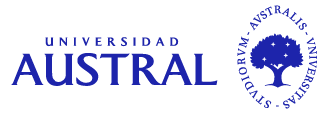 The CONICET-Universidad Austral Translational Medicine Research Institute (IIMT, for its Spanish acronym) was formally inaugurated at the university’s campus. This double-reporting institute is primarily intended to develop solution for the population’s healthcare needs, focusing its research on chronic pain, cellular and molecular medicine, palliative care, nanomedicine, eye care, and genetic therapy.
The CONICET-Universidad Austral Translational Medicine Research Institute (IIMT, for its Spanish acronym) was formally inaugurated at the university’s campus. This double-reporting institute is primarily intended to develop solution for the population’s healthcare needs, focusing its research on chronic pain, cellular and molecular medicine, palliative care, nanomedicine, eye care, and genetic therapy.
The IIMT promotes multidisciplinary integration in basic research, patient-oriented research, and population research in order to secure people’s long-term health improvements. IIMT’s contributions focus on the interface between basic and clinical research, underscoring two issues: human pathology animal or cellular models, and new, safe methods for diagnoses and treatments.
The inauguration event, held last Friday at the School of Biomedical Sciences’ auditorium (Austral University Hospital Building, in Pilar, Buenos Aires Province), was attended by Universidad Austral’s chancellor, Dr. Fernando Fragueiro; the head of the new IIMT, Dr. Marcelo Villar, and CONICET’s Institutional Relations Head, Dr. Antonio Ambrosini.
Dr. Villar expressed his gratitude to CONICET for “supporting and funding the creation of this institute that will benefit society at large.”
When his turn came, Dr. Ambrosini stated that “Argentine citizens have a lot to be proud of, and it is a great satisfaction to be here, launching CONICET-Austral IIMT.”
“Society is becoming increasingly aware of the implications of financial investments in research and their impact on taxes. The fact is that investments in biomedical research will not continue forever, without the demand for concrete results that improve patients’ health,” added Dr. Villar.
Also present at the ceremony were the dean of Universidad Austral’s School of Biomedical Sciences, Dr. Soledad Campos; the Chairman of the Board of the National Agency for Scientific and Technological Promotion (ANPCYT), Engineer Facundo Lagunas, and the Division Unit Development and Management head of CONICET’s Scientific and Technological Development Department, Ms. Luisa Baigorria, M.S.
Taking the floor, Dr. Fragueiro stressed the value of “having faith and patience in knowledge creation,” emphasizing as well, against the backdrop of Universidad Austral’s twenty-fifth anniversary, “the perseverance, lofty ideals, and human virtues that have driven the advancement of this institution.”
“We face significant challenges. In Argentina, we find it hard to forge public-private collaborations, as well as to combine science and assistance, but the conditions are favorable, and I am sure that this institute will bear many fruits,” sentenced Fragueiro, adding, “Working together, we can do a lot more than working individually.”
GOALS
The IIMT’s specific goals include contributing to the understanding of the causes and mechanisms of pathologies that affect human beings and promoting the development of therapeutic solutions that mitigate or cure them definitely; providing a space for scientists from different fields to interact with healthcare professionals from several specialties, and supporting research projects that involve fellows, doctoral candidates and young researchers focusing on applied medicine issues.
To illustrate this view, Dr. Villar wondered, “If drug X works for rats, rabbits or even monkeys, just how beneficial can it be for humans? If all processes were directly connected across species, this question would make no sense, but the need for translation underscores the existence of a large distance across species as well as the urge to shorten that distance.”
“We are placing one of the cornerstones of our House,” stated Villar, adding that “36 people are already working at IIMT, with a growth outlook and ambition.” The head of the new institute also highlighted the good synergy among the Austral University Hospital, Universidad Austral’s School of Biomedical Sciences and the Austral Scientific, Technology and Business Park, which houses 55 companies. This synergy will enable the creation of “new patents and products.”
IIMT’s PROPOSITION
Much of the basic research funded by several countries has failed to contribute to improving healthcare for their populations as compared to the large amounts of money invested. Some USD 270 billion are invested worldwide on biomedical research, but the path to develop a new treatment is long, costly and complex, and it often ends in failure.
some data on conicet-universidad austral iimt’s setting
- The IIMT is part of “Universidad Austral’s Academic Health Center”, consisting of the Austral University Hospital and the University’s School of Biomedical Sciences, much like its counterparts in the United States.
- Site: Pilar’s University Campus, where physicians, patients, researchers, students, and industry representatives all interact.
- Background:
- Universidad Austral is part of Argentina’s National Science and Technology System:
- 150 researchers –41 of them belonging to CONICET.
- 450 publications over the past 5 years (50% on biomedical sciences)
- Access to funding sources, like PICTO-AUSTRAL, among others.
- UA’s Clinical Research Unit:
- Audited by ANMAT and the U.S.’ Food and Drug Administration (FDA)
- Institutional Evaluation Committee (CIE)
- Accredited by Buenos Aires Province’s Central Ethics Committee and registered at the OHRP (Office of Human Research Protections).
- Austral University Hospital:
- First Argentine hospital to have been accredited by the Joint Commission International (JCI), the world’s leading healthcare center accreditation institution.
- Transplant leader in Buenos Aires Province.
- 800 applicants for 60 residency openings.
- Over 600,000 patients’ medical records, with potential access to 7 million Argentine citizens.
- Fourth in América Economía’s Ranking of Latin America’s Best Hospitals.
- Austral Scientific and Technology Park: It houses 55 companies and business ventures operating in the fields of biotechnology, software, education, chemical products, metrology, telecom, and food.
- Universidad Austral is part of Argentina’s National Science and Technology System:

